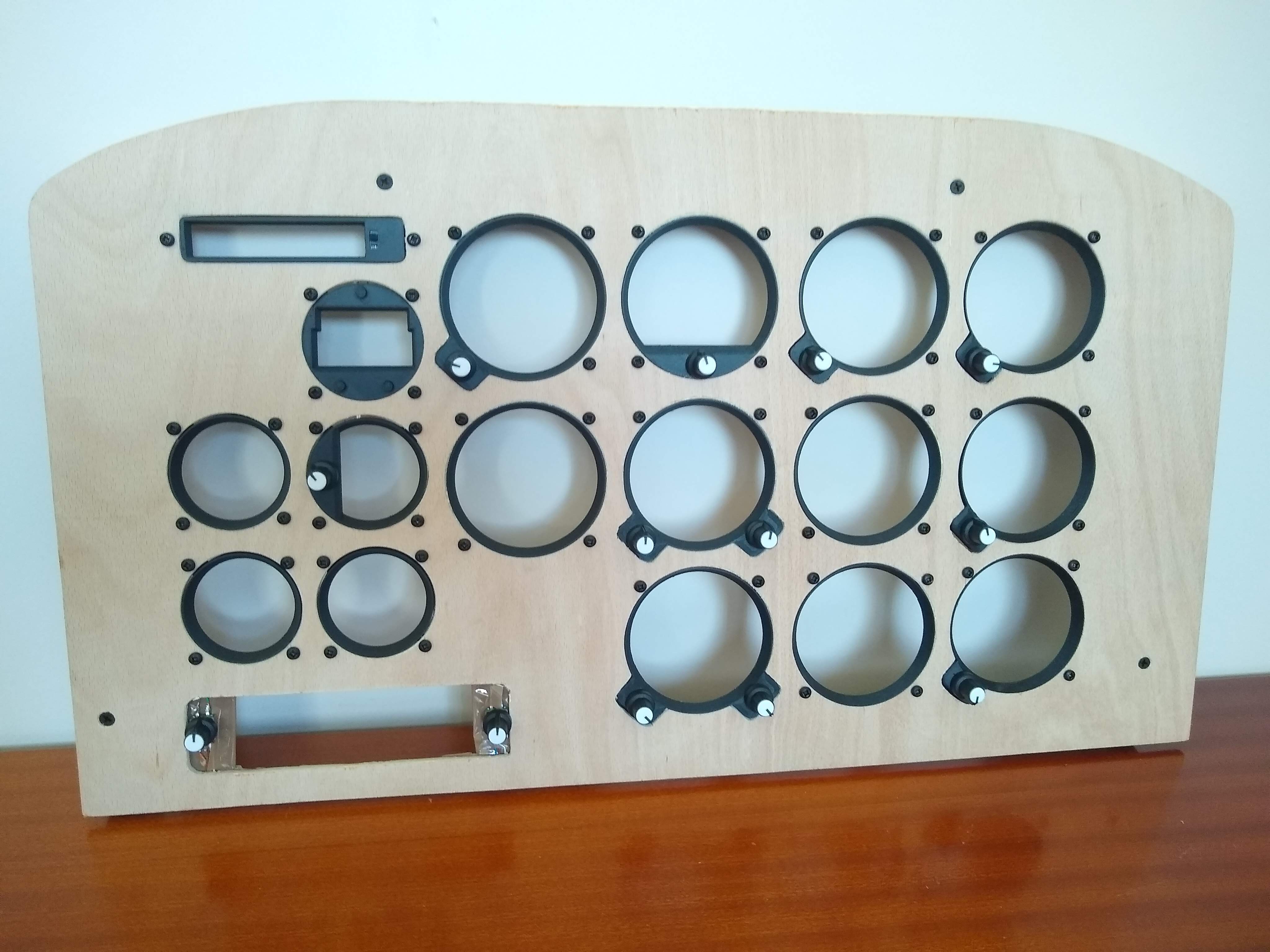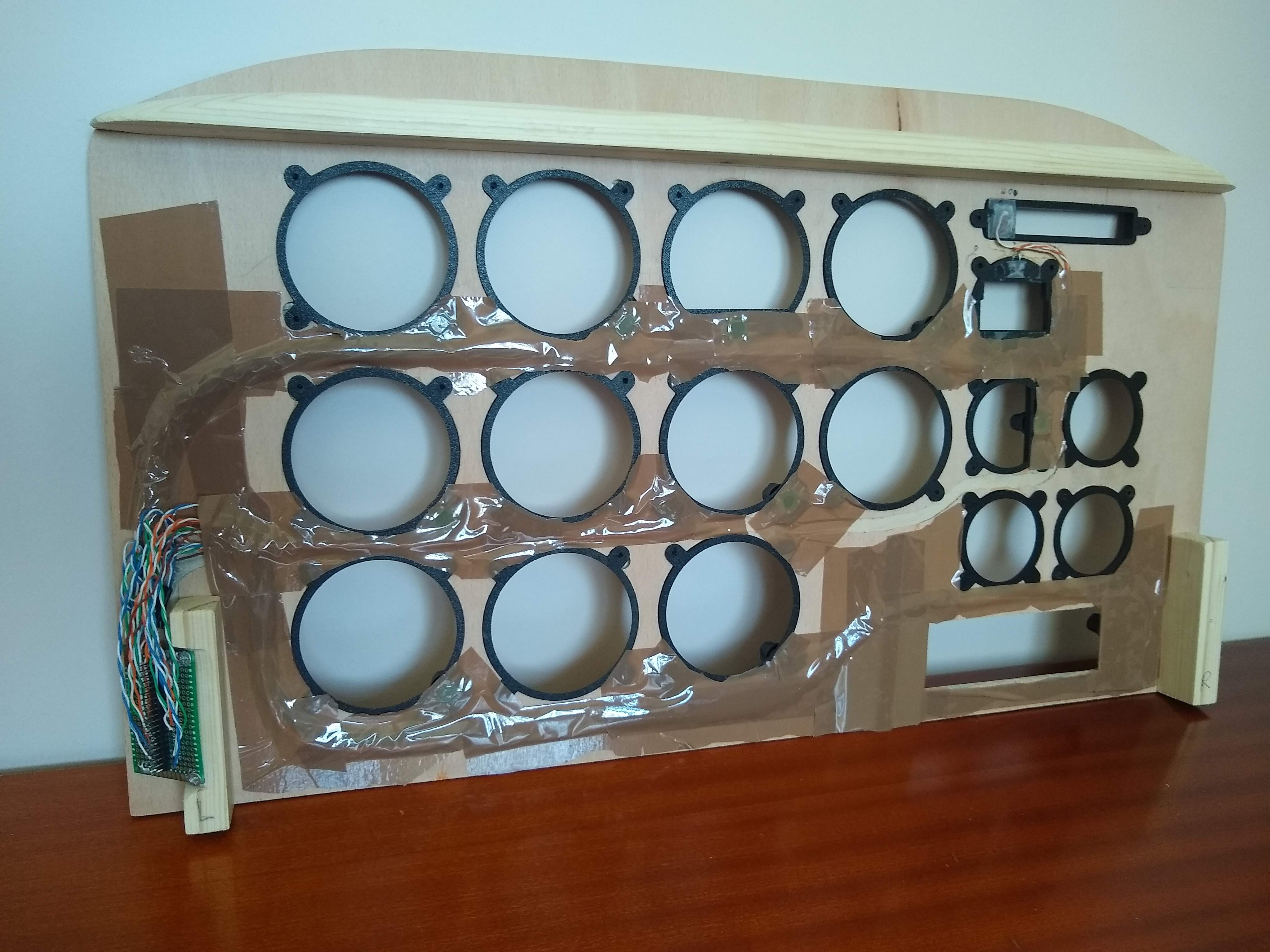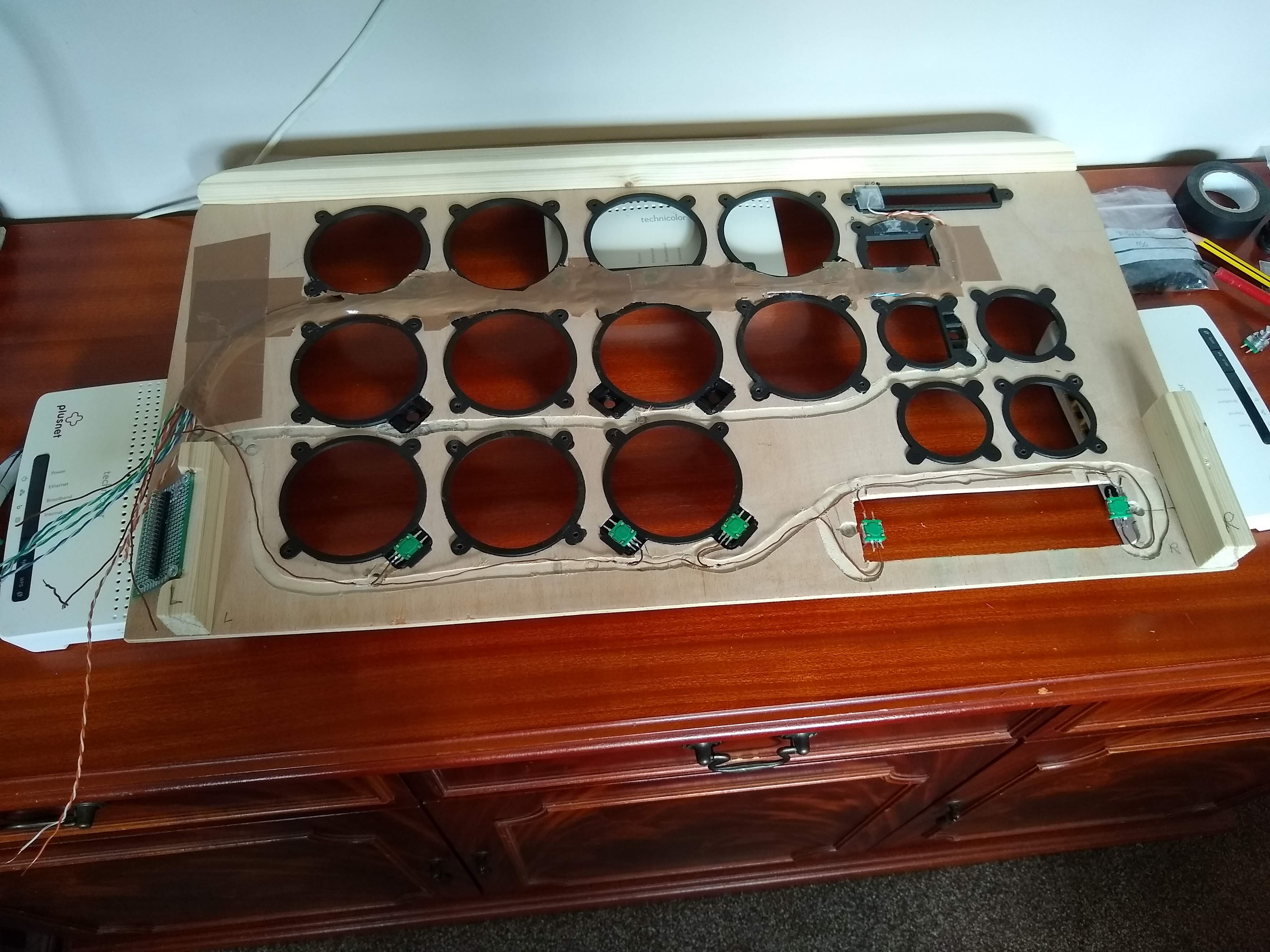Download the following two zip files.
Link: Latest release of Instrument Panel for Windows
Link: Latest release of Instrument Data Link for Windows
Unzip instrument-data-link into its own folder and double-click instrument-data-link.exe to run it.
Unzip instrument-panel into its own folder. If you are running it on the same PC as FS2020 the default settings are correct so just double-click instrument-panel.exe to run it. Press M to switch the display to a different monitor so it's not on the same monitor as FS2020. If you then press Escape to exit the program the settings will be saved and it will run on the same monitor next time.
To run instrument-panel on a different PC, unzip instrument-panel to a folder on the new PC. Edit settings/instrument-panel.json and in the "Data Link" section change the IP address of the "Host" to the address where FS2020 is running on your local network, e.g. 192.168.0.1 - You can find the correct address of your host by running a command prompt on the host machine and running ipconfig, then scroll back and look for the first "IPv4 Address" line. Now double-click instrument-panel.exe to run it.
Note: There is a screensaver feature so the instrument panel will appear dim until you run FS2020 and select where you are flying from. It will also dim when you are flying and enter the pause menu.
If you want to use the Savage Cub panel instead of the default Cessna panel or you want to define multiple panel layouts see section "Custom Panels" below.
Ready-built releases for Windows x64 and Raspberry Pi 4 can be found by clicking on the Releases section on the right of this readme.
An instrument panel for MS FlightSim 2020. This program is designed to run on a separate computer to the one running FS2020 but you can just run it on a different monitor if you wish. It can run on either a PC or a Raspberry Pi.
You can see it running on a Raspberry Pi 4 here: https://www.youtube.com/watch?v=vA6rveEP_9o and in action on a VFR flight with VATSIM from Gatwick to London City Airport here: https://www.youtube.com/watch?v=dC_PvOM0fI8
It requires the companion program from here
https://github.com/scott-vincent/instrument-data-link
The companion program runs on the same host as MS FS2020 and collects all the data required by the instrument panel.
The instrument panel connects to the instrument-data-link over your network and receives the data at regular intervals so that the instruments can be drawn with up-to-date values.
You can run as many instrument panels as you like. They all connect to the same data-link. Each panel must be configured to point to the host where data-link is running. You do this by editing the settings file and updating the Data Link Host IP address. If you just want to test the instrument panel on the same host where FS2020 is running leave the IP address as 127.0.0.1 and it will connect to the local host.
This program was heavily inspired by Dave Ault and contains original artwork by him.
http:https://www.learjet45chimera.co.uk/
https://hangar45.net/hangar-45-forum/topic/standby-gauge-software-by-dave-ault
It has been completely rewritten and updated to use Allegro5.
NOTE: Allegro5 must be built on RasPi4 as a standard Linux build, not the specific Raspberry Pi build, i.e.:
mkdir build
cd allegro5/build
cmake .. -DCMAKE_BUILD_TYPE=Release
make && sudo make install
p ........ Adjust position and size of individual instruments.
v ........ Adjust FlightSim variables. Simulates changes even if no FlightSim connected.
m ........ Move the display to the next monitor if multiple monitors are connected.
s ........ Enable/disable shadows on instruments. Shadows give a more realistic 3D look.
Esc ...... Quit the program.
To make adjustments use the arrow keys. Up/down arrows select the previous or next setting and left/right arrows change the value. You can also use numpad left/right arrows to make larger adjustments.
You can choose which instruments are included in the panel by setting the Enabled attribute for each instrument in the settings file:
settings/instrument-panel.json
On Raspberry Pi you can configure hardware Rotary Encoders for each instrument. Each rotary encoder is connected to two BCM GPIO pins (+ ground on centre pin). See individual instruments for pins used. Not all instruments have manual controls.
Instrument Panel now supports multiple panels in case you decide to build a Savage Cub panel for example instead of a Cessna panel. You need to create a settings file for each custom panel and you will find a Savage Cub one already in the settings folder.
To use it, on Windows you need to right click on instrument-panel.exe and create a shortcut to it, then add the settings file name to the Target, e.g.
Target: C:\instrument-panel\instrument-panel.exe savage-cub.json
On Raspberry Pi just supply the settings file name on the command line when you call instrument-panel.exe.
If no settings file is supplied, "instrument-panel.json" will be used and the default Cessna panel will be displayed.
Some of the instruments are 'intelligent' and will adapt to whatever aircraft you are currently flying. For example, adding ASI to your panel will allow it to switch to the Savage Cub version when you are flying that particular aircraft and ALT will switch to a version with a digital readout when you are flying a fast aircraft, e.g. one of the airliners.
Use a specific instrument in your panel if you don't want it to auto switch, for example, use "ASI Savage Cub" instead of "ASI" to always display the Savage Cub version of the instrument.
Note that only a few specific instruments have been created so far as this project is a work in progress.
If you get a black screen when running on a Raspberry Pi try setting UseOpenGL_ES3 to false in instrument-panel.cpp, i.e.
const bool UseOpenGL_ES3 = false;
If you find this project useful, would like to see it developed further or would just like to buy the author a beer, please consider a small donation.



